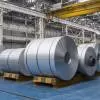
Mumbai-Ahmedabad Bullet Train Adds 8th Steel Bridge in Gujarat
The Mumbai-Ahmedabad Bullet Train project has reached another major construction milestone in Gujarat with the successful launch of its eighth steel bridge. This marks nearly 50 per cent progress on the 17 steel structures planned for the state as part of the high-speed rail corridor.The latest installation is a 100-metre-long steel span positioned over the Dedicated Freight Corridor (DFC) tracks near Bharuch. It is one of 28 steel bridges planned along the entire corridor, of which 17 are located in Gujarat.Weighing approximately 1,400 metric tons, the bridge stands 14.6 metres tall and spans..

India’s Largest Auto Cargo Terminal Opens at Manesar
Railways Minister Ashwini Vaishnaw on Tuesday inaugurated India’s largest Gati Shakti Multi-Modal Cargo Terminal for automobiles at Maruti Suzuki India Ltd’s Manesar facility in Haryana. The new terminal is expected to significantly improve rail-based logistics efficiency for the automotive sector.The facility connects to Patli railway station via a 10-kilometre dedicated rail line, forming part of the 121.7-kilometre Haryana Orbital Rail Corridor being developed by the Haryana Rail Infrastructure Development Corporation (HRIDC). The link was built at a cost of Rs 8 billion, with HRIDC con..

Maruti Suzuki Opens Rs 4.52 Bn Rail Siding at Manesar
Maruti Suzuki India Ltd (MSIL) has inaugurated India’s largest in-plant railway siding for automobiles at its Manesar facility, with a total investment of Rs 4.52 billion. The move is part of the company’s long-term strategy to shift more vehicle dispatches to railways, targeting a 35 per cent share by the 2030–31 financial year.Since 2014–15, MSIL has dispatched 2.5 million vehicles via railway, and in March 2024, it became the first Indian automaker to set up an in-plant siding at its Gujarat facility. The new Manesar railway siding is aligned with the PM Gati Shakti National Master ..















